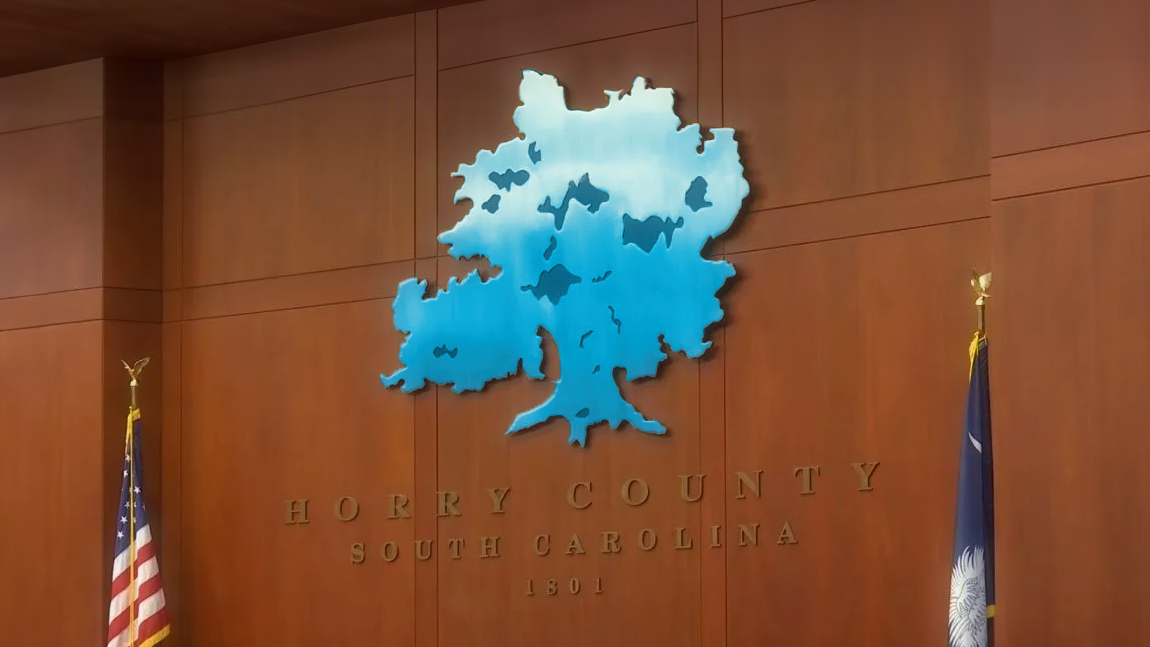Since the first African-Americans were forced to come to the New World in 1619, America has had an issue with race. Considered inferior, and in most cases, not even people, they were kept in bondage for generations.
The founding of our nation pivoted on a selective inclusion of enslaved individuals. Even as a bloody war got them their freedom, they were still considered second class citizens. The period of Reconstruction that followed witnessed continuing discrimination as White supremacists sought to deny freedmen of their rights.
The Jim Crow era should have ended with the Civil Rights Movement of the 1960s, but the War on Drugs and the Donald Trump era witnessed further efforts at discriminatory practices, both at the ballot box and through systemic racism in the law enforcement community.
Despite members of both parties declaring that America is not a racist nation, current events belie this claim. In his response to President Biden’s address to Congress, Sen. Tim Scott (R-SC) refused to acknowledge that racism exists in America. Scott is the only Black senator in the Republican Party and is routinely put out front as the face of the party when it comes to race relations and police reform.
Vice President Kamala Harris (D), herself the first Black vice president, echoed these sentiments days later. While she acknowledged America did, indeed, have a racist past, she also said that, though racism does, indeed, exist, it does not represent how most Americans feel.
The longer we deny the existence of racism, the longer we will suffer the consequences.
Coming to America
The 1619 Project began as a means to commemorate the arrival of the first slaves on American soil. It seeks to highlight the African-American experience and their contributions to our nation. By centering on African-Americans, the project, started by the New York Times, sought to correct many misconceptions about how these people were as much a part of the American landscape as the Founding Fathers.
Predictably, Donald Trump and other Republicans opposed efforts to include these facts in public education. Sen. Tom Cotton (R-AK) went as far as introducing a bill to ban what he called “revisionist history” in public schools, threatening to cut off funding to school districts that adopted the 1619 curriculum.
Ignoring the facts doesn’t make them any less relevant. While most White Americans can trace their ancestry to those who came to this nation to seek a better life, those of African heritage arrived in chains. Most endured generations of bondage and abuse while their White masters grew more wealthy due to this free labor.
Some have argued that descendants of former slaves are entitled to reparations, since they were denied the fruits of their labor and the financial opportunities that accompanied them. Many wealthy White Americans can attribute their financial success to the benefits of slave labor, while generational poverty is prevalent in Black communities.
Birth of a Nation
“When in the course of human events…” is how the Founding Fathers began the Declaration of Independence. They sought to address the unfair economic treatment they saw occurring at the hands of their British masters. Yet, they wholly ignored the economic repression they were enabling by allowing slavery to flourish. Indeed, this source of free labor was the backbone to Colonial America’s economic success. The cash crops of tobacco and cotton were keys to much of the wealth that backed the revolution.
The war that led to our independence was more about economic freedom than it was the desire to be the land of the free. “No taxation without representation” became a rallying cry for those who sought to free themselves from the alleged shackles of British oppression. And yet shackles were the very thing used to oppress an entire segment of the population.
And yet, they weren’t even considered people. The fact they were even included in determining representation in the fledgling United States government was more about the political and economic advantages of even partial inclusion in the initial census.
Northern states had a huge advantage in population. This meant, based upon the Constitution, they would have a decided advantage when it came to representation. The infamous three-fifths compromise was included to get the support of slave-holding southern states for the Constitution. Without this clause, the Constitution would not have been ratified.
The three-fifths compromise denied the rights of citizenship to those in bondage, yet permitted them to be counted as less than a person for the purpose of representation. The United States owes its existence to people who weren’t even permitted a say in their own government, which makes the phrase “no taxation without representation” ring pretty hollow.
The REAL War for Independence
The consequences of the three-fifths compromise rippled through the first century of our country’s existence. There were those who wished to abolish the barbaric practice of slavery and those who demanded that the institution remain. It led to many heated battles on the floors of Congress and finally culminated in the bloody Civil War.
The Civil War was all about the economic survival of the South. They lacked the industrial might of the northern states and therefore needed to rely on slave labor to remain economically viable. The Missouri Compromise and Kansas-Nebraska Act were measures taken to maintain the balance of power between the states that permitted slavery and those who were “free states”.
While their freedom hinged on the outcome of this first insurrection, African-Americans were mere pawns in their own battle for freedom. Indeed, it was well into the war before they were even allowed to join the fight. The formation of the Fifty-Fourth Massachusetts regiment marked the first time they were permitted to actively engage in the war for their own independence.
Many assume that the Emancipation Proclamation freed the slaves. History incorrectly gives Lincoln the credit for a abolishing slavery the same as it erroneously claims that Columbus “discovered” America.
What Lincoln actually did was to free those who were enslaved in states that were currently engaged in rebellion against the United States. Those holding slaves in the aptly named border states, called such because they bordered those states that stood for the Confederacy and the Union states, yet took neither side, were permitted to keep slaves. In fact, some border states had more slaves than those engaged in the rebellion.
So, despite the continued insistence that Lincoln freed the slaves, it actually took multiple acts of Congress through the thirteenth, fourteenth and fifteenth amendments to the Constitution to actually abolish slavery. But it was a tenuous freedom.
New Forms of Slavery
The period following the Civil War sought to unify the once divided nation, but also provide those once enslaved with the rights they’d been denied for generations. This period, known as Reconstruction, witnessed an occupied South where “Carpetbaggers” from the North exercised control over many elements of political life, including the empowerment of Blacks. The newly freed slaves were promised land and livestock as compensation, and to allow them to begin a new life: the infamous “forty acres and a mule”.
After years under these conditions, Southern leaders were able to regain control. Once re-established, the former slave owners instituted a process called sharecropping, which effectively bound the former slaves in a circular form of bondage where they were permitted to farm the land, but were then required to pay rent on the land. When they were permitted to sell their crops, the one-time masters deliberately suppressed their value, meaning Blacks only earned enough to remain continually in debt.
Segregation and restrictive voter requirements further limited the ability of African-Americans to seek a better life. These practices became known as Jim Crow Laws. They were legal efforts to permit segregation and enforce “separate but equal” facilities where Whites received preferential treatment over their Black counterparts, no matter what the laws said.
Whites were so resentful of Black success that they would go to extreme measures to prevent it. When an area known as Black Wall Street in Tulsa, Oklahoma became a symbol for African-American prosperity, resentful Whites destroyed the community and murdered several hundred Black residents.
Despite this resentment, the Harlem Renaissance witnessed an influx of both Blacks and Whites intermingling to enjoy the music and dance steps that ushered in the Jazz Age.
Strange Fruit
For the next 100 years following the end of the Civil War, Blacks faced systematic oppression. Laws designed to prevent them from enjoying their freedom and a society constructed to suppress their civil rights weren’t always enough to satisfy racist Whites.
It was under these circumstances that the Ku Klux Klan was formed. These hooded domestic terrorists sought to intimidate Blacks, Jews and other members of the population they viewed as “inferior”. Forms of intimidation included burning a cross on the lawns of those they sought to discourage. When that failed to achieve the desired effect, members of the Klan resorted to violence, which could be in the form of beatings, whippings, firebombs and even lynchings.
The song “Strange Fruit” was popularized by Billie Holiday. It’s haunting lyrics depicted the images of lynched bodies hanging from trees, like so much strange fruit. Holiday’s refusal to stop singing the song resulted in years of legal harassment, including imprisonment and attempts to ban her from the entertainment business. It would seem Whites did not want to discuss lynching, but they also have repeatedly refused to pass an anti-lynching law.
The War on Drugs?
The Civil Rights Movement brought about many changes to how Blacks in America were treated. Jim Crow laws were abolished and segregation was outlawed. Affirmative Action offered employers incentives for hiring minorities and there were minority admission requirements for colleges. These were all an effort to make amends for what became known as White Man’s Burden; the penance they must pay for their historically horrific treatment of Blacks.
So, when Richard Nixon declared a War on Drugs, it became a new form of Black oppression. Prisons quickly filled with a disproportionate number of minorities who were given Draconian prison sentences for relatively minor offenses. The so-called “War on Drugs” has been nothing more than another form of oppression.
The penalties for crack cocaine possession are far more severe than that for powder cocaine. Crack is a cheaper, more potent version of the drug, so it is more widely available to low income minority populations. Powder cocaine has been viewed as the drug of choice among the affluent, primarily White population.
Meanwhile, the Sackler family, the ones behind the opioid epidemic, have not been arrested or even charged (but have been held liable in civil court) for causing the deaths of thousands, while low level drug dealers are jailed for years due to the harsh mandatory minimum penalties designed to mete out uneven punishment to mainly minority offenders.
The moral here may be this: you need to kill a lot of people in order to avoid responsibility.
This has been examined more closely with the concept of Critical Race Theory, which explored the historic treatment of Blacks as part of the social structure as well as the justice system. White privilege, institutional and structural racism, fairness in housing and the overall disadvantages of Blacks throughout history are continuing to be examined through the lens of race.
The Trump Era and Systemic Racism
Without Barack Obama, there would be no Donald Trump. Trump launched his political career on the birtherism lie. He stoked the fears of racism by declaring Barack Obama was not a legitimate president, igniting the racist hatred that White supremacists embraced.
During his term, Trump has praised White supremacists, calling them “very fine people”, while blasting NFL players who took to one knee to protest police treatment of minorities. He enjoys the backing of the White supremacy groups the Proud Boys and the Boogaloo Boys, both of whom had members taking part in the January 6th insurrection.
Trump referred to members of the Black Lives Matter movement as “thugs” while calling those who took part in the insurrection as “very special people”. He had peaceful protestors gassed so he might have a photo op, while telling those who attacked the Capitol “we love you”.
All the while, Trump has denied that systemic racism exists while calling for “law and order” as people take to the streets to protest the death of yet another Black man at the hands of law enforcement. His denial, like so many other outlandish comments he has made, smack in the face of facts.
Politicians are truly masters of parsing their words. When Sen. Scott and Vice President Harris declared that America is not a racist nation, they meant that a majority of Americans are not racists. Others have tried to say they are denying that racism exists, but this just twists the narrative into a political argument rather than a statement on our society.
Racism does indeed exist. It is an indelible stain on our nation’s past and a threat to our future as the census predicts Whites will become a minority by 2045. This has caused a surge in racist attacks as White supremacists seek to maintain their dominance.
We all harbor our own private racist feelings based upon our upbringing. We need to check ourselves daily to ensure these don’t become who we are as a nation.




